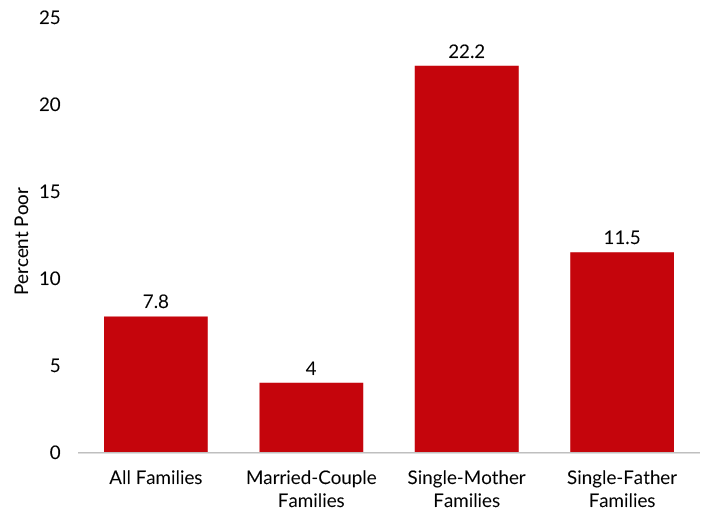The most recent official poverty measure estimates show that 10.5% of the population of the United States, 34 million people, was poor in 2019. The graph below shows the rate of poverty over time for the United States, from 1959 to 2019. This page goes on to show the rates of poverty by a number of demographic and geographic subgroups.
The official poverty rate when it was first measured in 1959 was 22.4%; then, after a major decline over the 1960s, poverty has hovered between roughly 10% and 15%.
Other Poverty FAQs
Poverty Rates by Demographic Subgroups
The U.S. Census Bureau releases annual estimates of poverty by various subgroups in the United States. Below, this section describes each of these groups for the year 2019:
- Age: Children had the highest poverty rate of the three major age groups: children under 18 (14.4%), adults aged 18-64 (9.4%), and seniors aged 65 and older (8.9%).
- Age and sex: When considering the difference in poverty between male and female Americans by age, among adults, poverty was higher among women. The poverty rate for those over age 18 was about 3 percentage points higher among women than men.
- Race and ethnicity: African Americans had the highest rate of poverty among the four groups of White (non-Hispanic), African American, Hispanic, and Asian. The poverty rate among African Americans was 18.8%.
- Family composition: Among different family types (married couple, single mother, and single father), single-mother families had the highest poverty rate at 22.2%.
- Region: Poverty rates differ by region of the United States, with the South having a higher rate than the Northeast, Midwest, and West in 2019.
- Work: Those who didn’t work at least one week in 2019 had the highest poverty rate of 26.4%. Among all workers with at least one week of work throughout the year, the poverty rate was just 4.7%.
- Disability status: Those with a disability had a poverty rate of 22.5%; just 8.4% of those without a disability were in poverty.
- Education: Among adults aged 25 years of age and older, those without a high school diploma had the highest poverty rate of 23.7%. Those with a high school diploma had about half that rate at 11.5%. Those with a bachelor’s degree or higher had the lowest rate at 3.9%.







